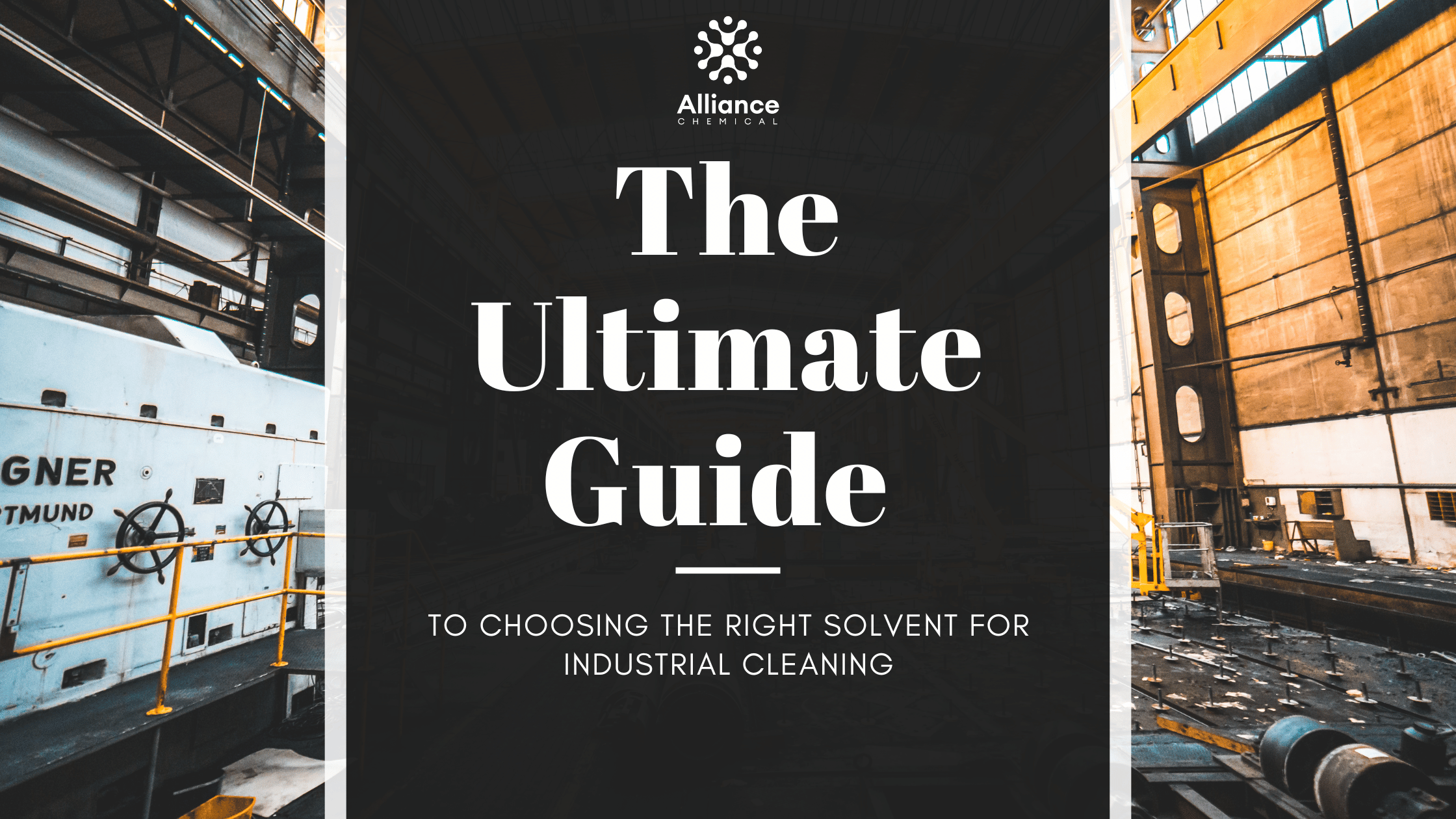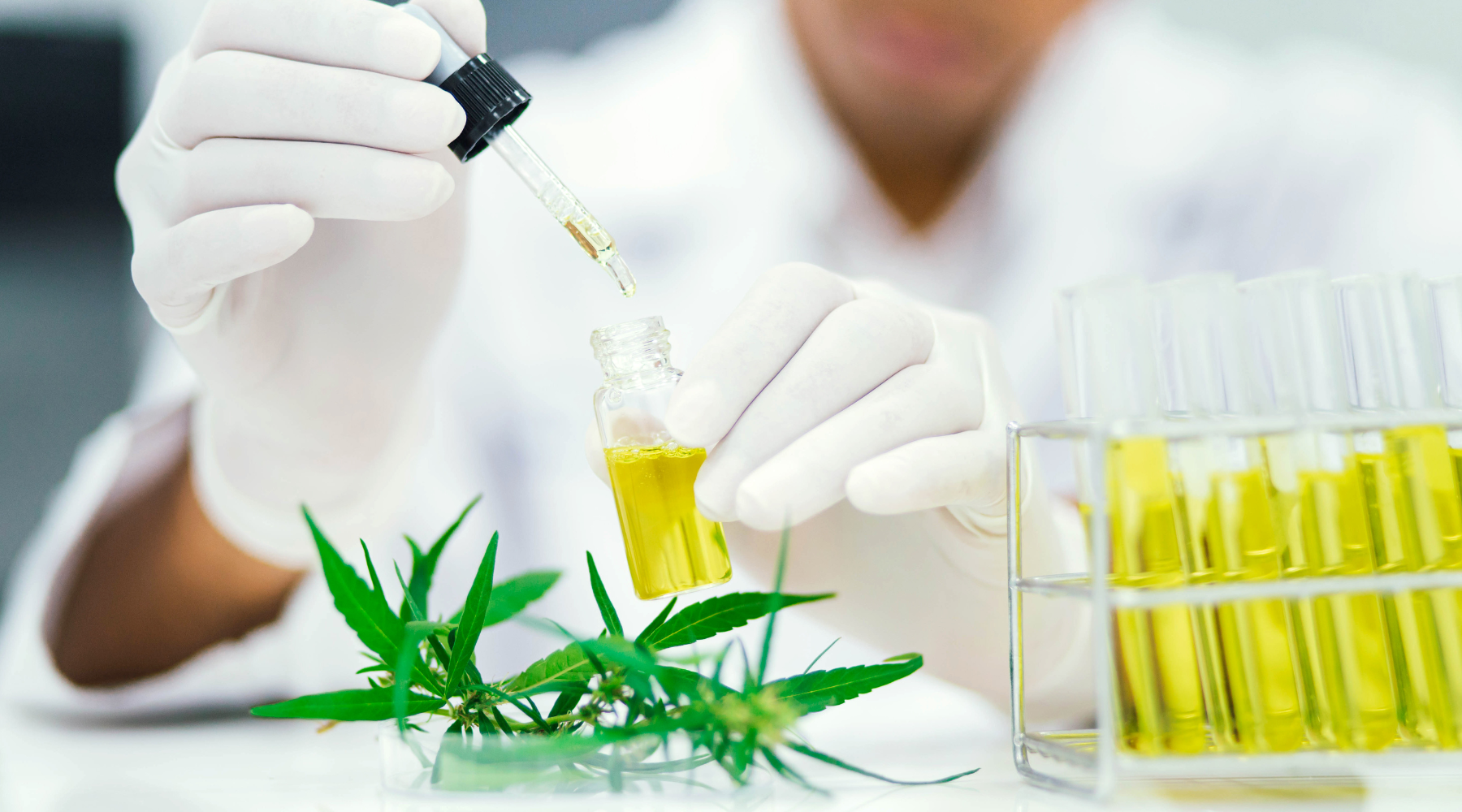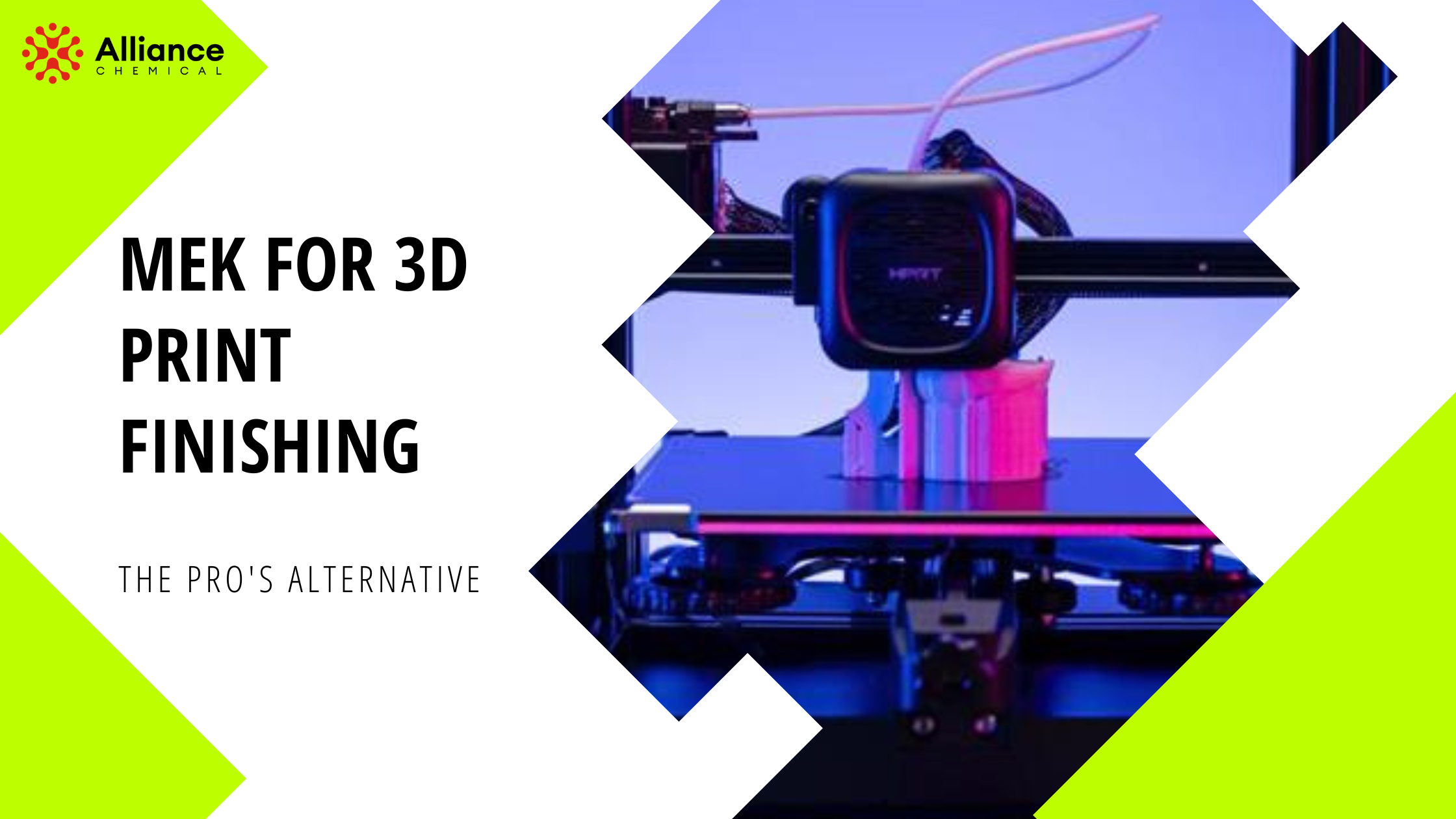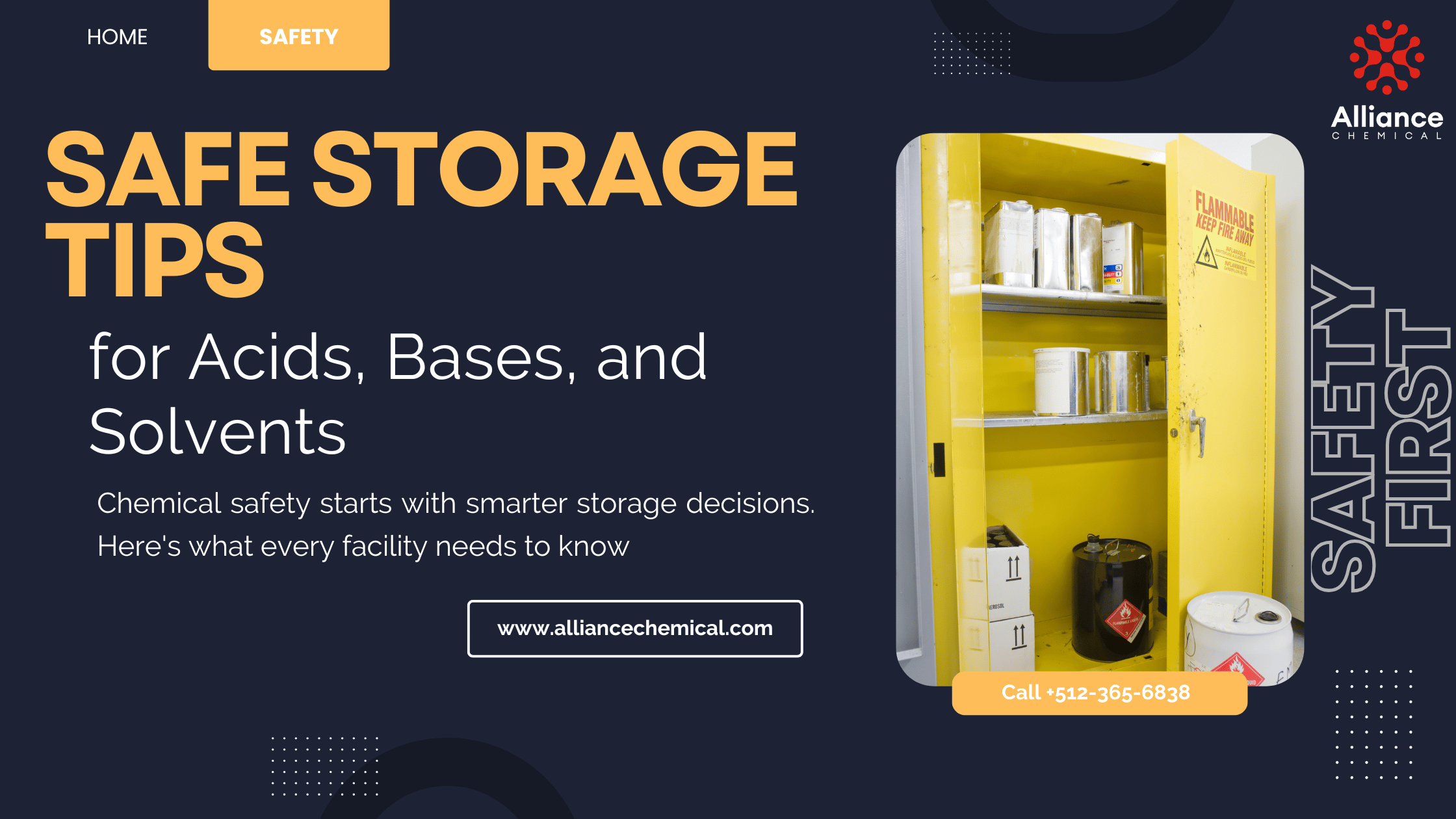
The Ultimate Guide to Choosing the Right Solvent for Industrial Cleaning
Navigate the complex world of industrial solvents. Learn how to select the perfect cleaner for efficiency, safety, and compliance in your specific application.
Introduction: Why the Right Solvent is Critical
Industrial cleaning isn't just about making things look good; it's crucial for performance, maintenance, safety, and product quality. Choosing the *wrong* solvent can lead to damaged equipment, ineffective cleaning, safety hazards (like fires or toxic exposure), environmental fines, and wasted resources. The "best" solvent is rarely a one-size-fits-all solution.
This guide will walk you through the essential factors to consider, explore common industrial cleaning scenarios, break down different solvent categories, and highlight safety and environmental considerations. Our goal is to equip you with the knowledge to make informed decisions for your specific cleaning challenges.

What's the Goal?
Effective industrial cleaning aims to remove unwanted contaminants (soils) from a surface (substrate) without damaging the substrate, harming workers, or negatively impacting the environment, all while being cost-effective.
Key Factors in Solvent Selection
Selecting the appropriate solvent involves balancing several critical factors. Consider these questions before making a choice:
1. What Soil Needs Removing?
Is it grease, heavy oil, cutting fluid, ink, paint, adhesive residue, flux, fingerprints, or something else? "Like dissolves like" is a starting point – polar solvents for polar soils, non-polar for non-polar.
2. What is the Substrate Material?
Are you cleaning steel, aluminum, brass, specific plastics (ABS, Polycarbonate, HDPE), rubber, glass, or textiles? Solvent compatibility is crucial to avoid etching, swelling, cracking, or dissolving the material being cleaned.
3. What is the Cleaning Method?
Will you be using manual wiping, spray washers, immersion tanks (cold or heated), ultrasonic baths, or vapor degreasing? The method impacts requirements for flammability, evaporation rate, and foaming.
4. What are the Safety Requirements?
Consider flammability (flash point), toxicity (inhalation, skin contact), required Personal Protective Equipment (PPE), and ventilation needs. Always consult the Safety Data Sheet (SDS).
5. What are the Environmental Regulations?
Are there restrictions on Volatile Organic Compounds (VOCs), Hazardous Air Pollutants (HAPs), ozone-depleting substances, or specific chemicals in your region? Consider waste disposal requirements.
6. What Performance is Needed?
How clean does the part need to be? How quickly must the solvent evaporate? Is leaving a residue acceptable or problematic (e.g., for subsequent coating)? How strong does the solvency need to be (Kauri-Butanol or Kb value)?
7. What is the Overall Cost?
Look beyond the purchase price per gallon. Consider usage rate, energy costs (for heating), waste disposal costs, and potential costs associated with safety measures or environmental compliance.
Always Check Compatibility!
Before implementing any new solvent, test it on a small, inconspicuous area of the substrate material, especially plastics and elastomers, to ensure it doesn't cause damage.
Common Industrial Cleaning Use Cases & Solvent Considerations
Let's look at how solvent choices differ based on the application:
Metal Degreasing (General)
Removing oils, greases, cutting fluids, metal fines from parts before painting, coating, welding, or assembly.
- Considerations: Substrate type (ferrous vs. non-ferrous for corrosion), oil/grease type, required cleanliness level, downstream processes.
-
Common Solvents:
- Hydrocarbon Solvents (e.g., Hexane, Mineral Spirits): Good for oils/grease, varying evaporation rates. Flammable.
- Ketones (e.g., AcetoneSDS, MEKSDS): Strong solvency, fast evaporation, highly flammable. Can attack some plastics.
- Alcohols (e.g., Isopropyl Alcohol (IPA), Denatured EthanolSDS): Moderate solvency, good for lighter oils and ionic contaminants, often used for final rinse. Flammable.
- Aqueous Cleaners (View Options): Safer, non-flammable option, often require heat/agitation, may need rust inhibitors, rinsing.
- Chlorinated Solvents (e.g., Trichloroethylene (TCE)SDS, Perchloroethylene (Perc) - Highly Regulated): Historically common, very strong solvency, non-flammable, but significant health/environmental concerns. Use is heavily restricted.
Electronics Cleaning (PCBs, Components)
Removing flux residues, solder paste, ionic contaminants, fingerprints to ensure electrical performance and reliability.
- Considerations: Delicate components, material compatibility (plastics, conformal coatings), required cleanliness (often very high), residue-free evaporation.
-
Common Solvents:
- IPA (High Purity ACS Grade or 99% Tech Grade): Widely used for flux removal, good compatibility, relatively safe.
- Specialized Fluorinated Solvents (HFCs, HFOs): Non-flammable, excellent compatibility, low toxicity, but can be expensive and subject to environmental regulations (GWP). (Check specialized suppliers)
- Engineered Aqueous/Semi-Aqueous Cleaners: Effective with saponifiers for certain fluxes, require thorough rinsing and drying.
Paint Stripping & Coating Removal

Removing cured paint, varnish, powder coating, or other protective layers.
- Considerations: Type of coating, substrate material (wood, metal, plastic), speed required, safety (many traditional strippers are hazardous).
-
Common Solvents/Strippers:
- Methylene Chloride (Dichloromethane - DCM): Very effective but highly toxic and heavily regulated/banned for consumer use. (Availability may be restricted)
- N-Methyl-2-pyrrolidone (NMP): Effective alternative but faces increasing regulatory scrutiny due to reproductive toxicity concerns.
- Benzyl Alcohol: Slower acting but safer alternative found in many newer formulations.
- Dibasic Esters (DBE): Lower volatility, relatively safer profile.
- Caustic Strippers (Sodium Hydroxide based): Effective on some paints, but corrosive to skin and some metals (like aluminum).
Warning: Paint Strippers Can Be Hazardous!
Always use paint strippers with extreme caution, ensuring excellent ventilation and appropriate PPE (respirator, gloves, eye protection). Follow manufacturer instructions and SDS guidelines rigorously.
Textile Cleaning & Spotting
Removing stains and soils from fabrics in industrial laundry or spot cleaning applications.
- Considerations: Fabric type (natural, synthetic), dye fastness, stain type (oil, water-based, ink), regulatory environment (e.g., for dry cleaning).
-
Common Solvents:
- Perchloroethylene (Perc): Traditional dry cleaning solvent, effective but under environmental/health scrutiny.
- Hydrocarbon Solvents (View Options): Alternative dry cleaning option, flammable.
- Specialized Spotting Agents: Targeted formulations for specific stains (e.g., enzymes, oxidizers, specific solvents).
- Water (with detergents/surfactants): For washable fabrics and water-based stains.
Adhesive & Sealant Removal
Dissolving or softening cured adhesives, tapes, labels, or sealants.
- Considerations: Type of adhesive (epoxy, cyanoacrylate, silicone, pressure-sensitive), substrate compatibility.
-
Common Solvents:
- AcetoneSDS, MEKSDS: Effective on many adhesives, fast-acting, flammable, check plastic compatibility.
- Aromatic Hydrocarbons (e.g., Toluene, XyleneSDS): Strong solvency for many resins/adhesives, but higher toxicity/flammability.
- d-Limonene (Citrus Solvent): Bio-based option, effective on many pressure-sensitive adhesives, slower evaporation, strong odor.
- Specialty Adhesive Removers: Formulated blends for specific adhesive types.
Understanding Common Solvent Categories
Solvents can be broadly categorized based on their chemical structure, which dictates their properties:
| Solvent Category | Examples | Pros | Cons | Primary Uses |
|---|---|---|---|---|
|
Hydrocarbons (Aliphatic & Aromatic) |
Hexane, Heptane, Mineral Spirits, Toluene, XyleneSDS | Good solvency for oils/grease, wide range of evaporation rates, relatively inexpensive. | Flammable, VOCs, Aromatics (Toluene, Xylene) have higher toxicity, can damage some plastics/rubbers. | Degreasing, cleaning, paint thinning, adhesive component. |
|
Oxygenated Solvents (Alcohols, Ketones, Esters, Glycol Ethers) |
IPA, Denatured EthanolSDS, AcetoneSDS, MEKSDS, MPKSDS, Ethyl Acetate, n-Butyl AcetateSDS, Glycol Ether EB, Glycol Ether PM | Wide range of solvency (polar & some non-polar), many are water-miscible, variable evaporation rates. | Most are flammable, VOCs, some have specific health concerns (e.g., certain glycol ethers), can attack plastics. | Degreasing, electronics cleaning, surface prep, paint/ink formulation, extraction. |
|
Halogenated Solvents (Chlorinated, Brominated, Fluorinated) |
Trichloroethylene (TCE)SDS, Perchloroethylene (Perc), n-Propyl Bromide (nPB), HFCs, HFOs | Excellent solvency (esp. heavy grease), often non-flammable, fast evaporation (some). | Significant health risks (carcinogenicity, neurotoxicity), environmental concerns (ODP, GWP, groundwater contamination), heavily regulated, expensive (newer gen). | Vapor degreasing, precision cleaning, dry cleaning (historical/declining use). |
| Aqueous Cleaners | Water + Detergents, Surfactants, Builders, Inhibitors, Saponifiers (View Formulations) | Generally safer (non-flammable, low VOC), environmentally friendly, cost-effective (water). | May require heat/agitation, longer drying times, potential for substrate corrosion (need inhibitors), rinsing often required, wastewater treatment needs. | General degreasing, parts washing, replacing solvents in many applications. |
| Bio-based / Green Solvents | d-Limonene (Citrus), Soy Methyl Esters, Lactate Esters | Often biodegradable, derived from renewable resources, lower toxicity profile (often). | Can have strong odors, slower evaporation, variable solvency, potential compatibility issues, may still be VOCs. | Degreasing, adhesive removal, ink cleaning, solvent replacement initiatives. |
Need Help Choosing?
The world of solvents is vast. Alliance Chemical offers a wide range including alcohols, ketones, esters, hydrocarbons, glycols, and more. Contact us for specific recommendations.
Safety, Handling, and Environmental Considerations
Using solvents safely and responsibly is paramount.
Consult the SDS
The Safety Data Sheet (SDS) is your primary source for hazard information, PPE requirements, first aid measures, handling/storage instructions, and disposal considerations. Always read and understand the SDS before using any solvent. We've linked several examples in this guide!
Personal Protective Equipment (PPE)
Use appropriate PPE based on the SDS: chemical-resistant gloves (specify type like Nitrile, Neoprene), safety glasses or goggles, face shields, and potentially respirators for volatile or highly toxic solvents.
Ventilation
Work in well-ventilated areas. Use local exhaust ventilation (fume hoods) or general ventilation to keep airborne concentrations below exposure limits, especially for volatile or toxic solvents.
Flammability Control
For flammable solvents, eliminate ignition sources (sparks, open flames, hot surfaces). Use proper grounding and bonding techniques when transferring large quantities to prevent static discharge.
Storage
Store solvents in appropriate, labeled containers in designated areas (e.g., flammable cabinets for flammable liquids), away from incompatible materials (like oxidizers). Follow guidelines similar to those in our Chemical Storage Guide.
Waste Disposal
Dispose of used solvents and solvent-contaminated materials (rags, absorbents) according to local, state, and federal regulations. Many used solvents are considered hazardous waste.
Regulatory Landscape
Be aware of regulations from agencies like OSHA (worker safety), EPA (environmental protection - Clean Air Act for VOCs/HAPs, RCRA for waste), and potentially state/local air quality districts. Regulations are constantly evolving, especially regarding halogenated solvents and high-VOC materials.
Conclusion: Making the Informed Choice
Choosing the right industrial cleaning solvent is a multi-faceted decision that directly impacts operational efficiency, worker safety, environmental compliance, and your bottom line. By systematically evaluating the soil, substrate, cleaning process, safety data, environmental impact, performance needs, and overall cost, you can move beyond guesswork and select the most effective and responsible solution.
Remember:
- There's no single "best" solvent for all applications.
- Always prioritize safety and consult the Safety Data Sheet (SDS).
- Test compatibility before widespread use, especially on sensitive materials.
- Consider newer, safer, and more environmentally friendly alternatives where feasible.
- Stay informed about evolving regulations.
Investing the time to choose wisely pays dividends in performance, safety, and sustainability.
Find Your Ideal Industrial Solvent
Navigating solvent options can be challenging. Alliance Chemical offers a comprehensive range of high-quality solvents and cleaning chemicals, backed by expert support. Let us help you find the perfect match for your industrial cleaning needs.
Get Expert Advice Browse Solvents








